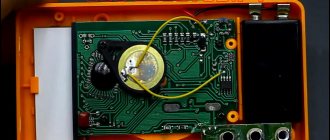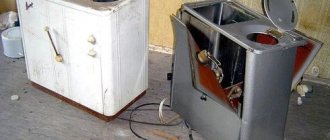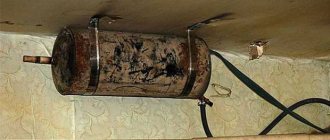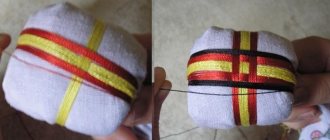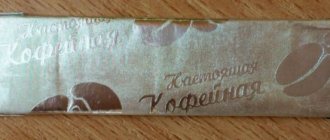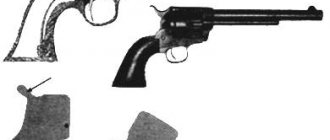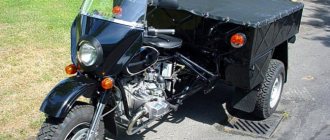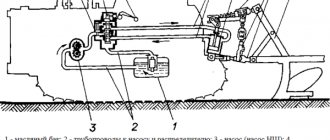It is important for every motorist to be confident in his car. In addition to the technical side, attention should be paid to the mechanical strength of the most vulnerable parts. One of them is the oil pan of the power unit. On a country road, when driving over rough terrain, you can unexpectedly run into a bump, stump, or stone. The result is often a penetration of the metal pan.
To prevent such unpleasant situations, protection is installed in such places at the plant. A standard design is often not enough.
Making an additional protective sheet with your own hands is not that difficult. First you need to make a diagram, cut out individual elements, attach fasteners from the corner to the side members or subframe. The entire work will take a maximum of three days.
Engine crankcase protection - a homemade economical option
For every responsible motorist, it is extremely important to be confident in your car and know for sure that all its elements work as they should, without problems.
To ensure that no problems or difficulties arise during active operation, attention must be paid to mechanical protection. One of its elements is the oil pan of the power unit. On a country road, when driving over rough terrain, you can unexpectedly run into a bump, stump, or stone. The result is often a penetration of the metal pan.
Of course, manufacturers install standard protection at the factory, but, as practice shows, it is often simply not enough. This is especially true for off-road enthusiasts.
DIY protection . Making an additional protective sheet with your own hands is not that difficult. You need to make a diagram, cut out individual elements, attach fasteners from the corner to the side members or subframe. The entire work will take a maximum of three days. The most important thing is to approach this work responsibly so that the manufactured protection actually copes with its functions and protects the bottom of the car.
Material. To make additional crankcase protection, you must first select a suitable protective material. As practice shows, for the manufacture of protection you can use: steel sheets, aluminum, plastic, titanium and stainless steel. Each of these types of material differs from each other in parameters that must be taken into account.
Steel elements can protect the car from various impacts and negative external factors for many years, allowing owners to operate the car without problems for a long time.
For the manufacture of homemade engine protection, plastic materials are best in terms of price, weight, and ease of installation. On the other hand, the service life, strength, and reliability of polymers are inferior to materials made of steel and aluminum. As a result of a strong impact, the plastic may become deformed and even crack.
Scheme. Drivers understand that the work must be done very carefully. That is why, you need to do this business only after first drawing a diagram according to which the work will be carried out. You can create a diagram yourself, taking into account all the parameters of the car.
To produce accurate drawings you will need certain skills. But every motorist can draw a simple diagram without any difficulties. This will really greatly simplify the work in the future, so you should not ignore the preliminary creation of the circuit.
Installation and fastening. Work on installation and manufacturing of the protective housing must be performed in a certain sequence. First, you need to drive the car into the inspection hole; you will need a lift to provide free access to the area being repaired.
Having secured the element as it should be and making sure of its reliability, you can continue to operate the car without worrying that the crankcase may be damaged and the car will need to undergo serious and expensive repair work.
Conclusion. Protecting the crankcase is a truly important task, so drivers must take a responsible approach to this issue. If there is a need to operate the car in difficult terrain, then it is better to take care of additional crankcase protection and protect the car from damage.
Source
Common breakdowns
Even experienced drivers would do well to know about the most common problems that can most often be encountered on the road, because if the breakdown is not identified and repaired in a timely manner, this will lead to expensive repairs or even an accident.
Check Engine Icon
The most common problem is the “Check Engine” warning icon, which is located on the dashboard and lights up when the electronic control unit (ECU) detects errors in the system.
If the indicator lights up, this means that one of more than 200 error codes has been detected.
To identify the cause and eliminate the problem, you need to immediately carry out a complete electronic diagnostic at the nearest car service center.
The car consumes a lot of fuel
During normal and smooth engine operation, fuel consumption is carried out in economical mode at optimal speed.
- At the same time, some of the parts of the fuel system periodically become dirty (filters, sensors, etc.) and are subject to wear over time.
- This is the most common reason why increased fuel consumption occurs.
- If you do not clean and replace system elements in a timely manner, this entails constant excessive fuel consumption.
Brakes squeak
Not only the safety of property, but also life depends on these essential elements of the car. Therefore, any problem with the brakes requires immediate attention.
- The vehicle should be taken to a mechanic immediately if you hear creaking, squealing, or the brake pedal feels soft.
- The sounds made most often indicate the need to replace the brake pads or discs.
If some of the breakdowns occur, the machine can be operated if the problems are not critical, but in some cases immediate intervention is required.
Let's take a closer look at the problems associated with the functioning of the engine crankcase.
Installing engine crankcase protection yourself
Civilization has spoiled us, dear car enthusiasts. This applies to many aspects of life, but we are not on a philosophical forum.
Therefore, we are talking about some repair work on a car that twenty years ago we would have done without thinking. There would be a car.
Today, in order to protect the engine crankcase with a ready-made system, we definitely contact a car service center. Only then, having received an invoice in which both the work and the engine crankcase protection itself are assessed, do we roll our eyes and say that we could do it ourselves. But it's' too late. The wallet has lost weight.
And that’s all about it – car engine protection
The crankcase protection is not a mandatory design part on many vehicles. Some car manufacturers install the so-called. plastic boot in front of the engine. Its main function is to protect the engine compartment from dirt and water, nothing more.
Original engine protection is also not provided for many car models, so there are analogues on the market that, after some modification, can be installed on your car.
Actually, why? The very name of the element “car engine protection” leaves no doubt about what task it performs. But it wouldn’t be superfluous to be more specific.
Why is it necessary to install engine crankcase protection?
An oil sump or oil pan is nothing more than a thin-walled container for engine oil. It is located under the engine. A hole, as well as a violation of the crankcase geometry (dent), disrupt the lubrication system with ensuing dire consequences for the engine.
In cars with a transverse engine, both the oil pan and the gearbox are in the danger zone.
Cars with a longitudinally mounted engine usually require sump protection, and the gearbox is safe, but relatively safe.
Basic requirements for oil pan protection
The principle of operation of the engine crankcase protection is that when hitting any obstacle, the impact energy is absorbed by the protection itself. Part of this energy is transferred to the body. The main requirement for mounting engine protection is that the protection must be installed to rigid body (frame) structures.
The requirements for the rigidity of protection are based on the safety of the driver and front passenger. After all, according to factory parameters, in a frontal collision, the car’s engine should go down, and not into the passenger compartment. That is why the engine protection must be structurally designed to have a downward slope.
Purpose and design
The crankcase guard is a piece of metal or composite material (fiberglass, carbon or Kevlar) that covers the bottom of the engine compartment. It is attached to the elements of the car body, if provided for by the design. The crankcase and gearbox protection is designed to prevent impacts with the engine sump and gearbox housing on uneven road surfaces and stones that sometimes appear on the roadway.
Since the engine oil pan, as well as the gearbox, is most often made of steel sheet less than a millimeter thick, in most cases it cannot withstand a serious collision with an obstacle. You cannot drive a car after such an incident, since oil will leak out through the hole formed, and the unit, working without lubrication, will quickly become unusable. On a car with a longitudinal engine, as a rule, only the engine sump is closed. Since the clutch housing and gearbox are located behind the engine, obscured by its sump. If the power unit has a transverse arrangement, then the crankcase protection, together with the engine, also covers the gearbox with the clutch cover.
Structurally, any engine sump protection is a thick plate with mounting brackets, which has one or two holes for draining used oil. If the engine layout does not allow the removal and installation of the oil filter from above, the crankcase protection must have a hole for its replacement from below.
Choice
To choose the right protection for your car, you need to know how similar-looking products differ. Oil pan protections from different manufacturers for a particular car model cannot differ significantly in their geometric dimensions, with the exception, perhaps, of the thickness of the plate, which for metal products should not be less than 3 mm. This means that you only have to choose the material from which the engine crankcase protection is made. Pros and cons of metals that are most often used for manufacturing.
Composites
Lightweight car engine crankcase protection made from composites is often installed on sports cars. Where there is no struggle for seconds, steel products are also suitable.
Preparation and scheme
To produce protective casing drawings, certain skills, abilities and experience are required. If you make mistakes at this stage, then the manufactured product can only harm the car due to improper installation and inconsistencies in the mounting points. The Internet will help solve the problem. Here, taking into account the specific brand of car, you can find the most accurate diagrams and drawings.
At the same time, it is advisable to check the correctness of the dimensions and attachment points in practice by first creating a “training” pattern from cardboard.
Professional repairmen do not advise unnecessary drilling of holes in the car body. It is better to use an existing thread. For preparation, it is necessary to ensure unobstructed access to the installation site of the protective structure.
Before carrying out work, you need to figure out the sequence and order of actions:
- drive the car onto a pit or lift;
- make accurate measurements of the bottom surface where the protective box will be installed;
- transfer the resulting diagram onto cardboard, compare it, mark the fastenings;
- transfer the pattern to the prepared material;
- find the necessary threaded connections on the suspension and elements of the vehicle's chassis.
Installation
When installing the protection, make sure that there is a gap of at least 2 cm between it and the pan. Since the car engine is mounted on rubber-metal mounts, and therefore inevitably fluctuates when starting and stopping. If you drive a car with too small a distance between these parts, the pan will come into contact with the casing, causing vibrations and unnecessary noise. Damage to the pan, which on some modern cars is made of plastic, is also possible. After this, the oil will, of course, flow out through the resulting hole.
If, after installing the protection, extraneous sounds appear when driving, check whether there are any traces of contact with the pallet, or whether its fasteners have become loose due to vibration.
Repair
Steel pan protection is the most repairable. You can weld a mounting bracket that has broken off from it either semi-automatically or with a conventional MP-3 electrode using a welding transformer or inverter. After repair, you can paint it with red lead diluted in drying oil - this is inexpensive and will reliably protect the metal from corrosion. Particular care must be taken to paint the welding seams. You can straighten a deformed steel shield using a regular sledgehammer.
Straightening the aluminum protection of a car engine is also not difficult, but welding this part will cost much more than a steel product. But there is no need to paint it, since a strong oxide film forms on the surface of the aluminum, protecting this metal from corrosion.
Basic requirements for crankcase protection
There is no state standard for crankcase protection, because they do not apply to automobile units, the certification of which is mandatory under Russian rules. This explains the wide range of protection parameters offered on the market. The main requirement for protection is set by common sense: their main quality is strength and rigidity, which determine the ability to withstand impact loads.
When hitting an obstacle, part of the impact energy is absorbed by the protection itself and its fastening, and part is transferred to the body. In this case, the body and its elements should not be deformed. It is these conditions that the mechanical properties of such equipment must meet.
The rigidity of the protection can be considered optimal if deformation occurs only within the gap between it and the crankcase (usually this gap is selected within 20–30 mm, since its further increase leads to a decrease in ground clearance). This is due to the fact that:
In addition, rigidity is determined by safety conditions - in the event of a frontal collision, the engine should move downwards and not towards the driver and front passenger. To prevent the protection from interfering with this, it is made with a downward deflection. This ensures its directional deformation when the front part of the car is crushed.
The strength of the protection is ensured by the design and materials used. It must be such that it can withstand a collision with a sharp stone, metal rod, etc. without serious damage.
The stronger and more rigid the protection, the more stiffening ribs it has and the greater their depth. The best model has deep relief over the entire area, which gives it high rigidity in both longitudinal and transverse sections.
The strength of the fastening is guaranteed by installing protection only on the power elements of the car - body side members, engine subframe, suspension cross member. Attaching the protection to weaker elements, such as the cross member under the radiator, is not strong enough; this is only permissible for anthers. If the protection is installed in this way, the radiator may suffer from an impact.
The strength of the fastening is also ensured by the use of appropriate fasteners - the strength and rigidity of the legs and protection brackets, and the material from which the bolts are made, become decisive.
The weight of the protection should be as low as possible while ensuring the necessary rigidity and strength. Therefore, its value for products offered by manufacturers is in the range of 7–15 kg, which does not lead to a noticeable increase in the load on the front axle of the car.
To determine the degree of rigidity of the protection at home, it is recommended to place it on the ground with its convex side up and stand on it. Good protection under a weight of 75 kg will bend no more than 10-15 mm without permanent deformation. If the deflection is greater, it is most likely a boot.
In addition to the above, good protections are characterized by the fact that they are installed on standard fasteners and there is no need to make additional holes in the body.
They must also have technological openings that make it easier to service a vehicle with installed protection, because eliminate the need for systematic dismantling when it is necessary to drain the oil, clean the filter, etc.
The quality of manufacturing of this equipment is also very important - the quality of painting, which, as a rule, serves as protection against corrosion, and trimming of edges, which affects not only the aesthetic perception of the product, but also the quality of its installation.
Another important attribute of good protection is the presence of rubber or plastic bumpers-shock absorbers at the points of contact with the car body, thanks to which the installed product does not vibrate, which means it does not create and even reduces the noise level in the cabin.
Key Features
To get started, you need to prepare the tools: a tape measure (or something else to take measurements), an angle grinder (grinder), a drill with drills and bits, a set of wrenches, welding and a steel blade.
In the factory, the protection is made by stamping, and there are stiffening ribs on it, which cannot be produced without a press. Therefore, when choosing a steel sheet, you must take into account that it should be thicker than the factory one, its thickness should be approximately 4 millimeters.
If you need to make bends in the sheet, then you need to clamp the sheet between the metal corners in the clamps and bend it using a fork lever. If possible, it is advisable to heat the bend area with a gas cutter.
It is clear that the more space is closed under the engine, the better. Maximum coverage will provide additional protection to the engine crankcase and engine compartment from dirt, snow and water.
Stage 1
- The first step is to drive the car onto a pit, overpass or lift to ensure easy access.
- Measurements are taken of the bottom where the protection will be located, and the dimensions are transferred to the prepared sheet of metal. In this case, it is necessary to take into account the necessary free space for turning the wheels and free movement of various mechanisms, in particular, suspension arms and drives. At a minimum, a 10 mm gap must be left. Also, you must try to maintain the shape of the space being closed so as not to leave gaps and to exclude protruding parts of the metal, for example in wheel arches.
- Before you start cutting out the shape and cutting, you need to think about how to attach the shield to the machine. At the same time, it is not advisable to drill holes in the frame, body or other parts of the car. It is necessary to find suitable threaded connections, for example, torque rod brackets. On the protection itself, there are two options for mounting brackets:
- Make the eyes as a continuation of the sheet metal. In this case, when measuring the bottom of the car, it is necessary to take them into account and mark them. Then drill holes of the required diameter and, if necessary, bend them.
- If it is impossible or difficult to manufacture the above fastening, the bracket is made separately from leftover metal. These can be of various forms - corners, plates, brackets, etc. They are attached to the car with threaded connections, and they can be attached to the protection by welding. For greater rigidity, parts should be welded overlapping, and in no case joint to joint.
Stage 2
- When the future protection is cut out and the brackets are made, it can be installed by attaching a couple of bolts. Check for excess metal, gaps with moving parts and with the engine oil pan, and alignment of mounting holes. During this procedure, you can mark a hole for the hatch to drain used oil and, if necessary, to access the oil filter.
- Depending on the size, the hatch is cut out either with a crown or with a grinder. It can be made open, but then dirt will get through it into the engine compartment. In order to avoid this, four holes are drilled on the upper side of the sheet along the perimeter of the hatch and nuts are welded to them, into which the bolts securing the hatch will be screwed.
- As a final touch, the protection can be primed, painted and, after drying, the homemade engine protection is ready.
As a result, we can conclude that making engine protection with your own hands is not such a difficult task. The main thing is to have a desire. Tools and necessary equipment can be purchased or rented, and skills can be acquired on the job.
Source
Is it possible to make and install engine crankcase protection with your own hands?
Indeed, you can do the protection of the internal combustion engine yourself, but be prepared for the fact that this process is not at all simple. First you need to find out about the required sizes. You can take measurements yourself or by referring to specialized literature or forums discussing the model of your car.
Please note that the sheets should not be placed close to the motor. When developing them, it is necessary to take into account the design of the internal combustion engine. After this, select the material from which you will make the product. Stainless steel models are the most popular. The final stage is installation. Of course, a do-it-yourself option will be more cost-effective than a ready-made one. But there is no guarantee that your actions will be correct. That is why we recommend using ready-made types of engine crankcase protection.
Engine compartment
Do-it-yourself engine soundproofing starts with the engine shield. The main feature of the work is the need to remove elements attached to the partition. Since the engine shield is one of the most vibration-loaded body elements, the “vibration” on the side of the internal combustion engine must be glued over the entire accessible plane. You should prefer a material with a foil front layer, which will reflect heat waves, maintaining the temperature of the engine compartment (especially important for diesel internal combustion engines).
Pasting the inside of the engine shield is impossible without completely dismantling the dashboard, which on many foreign cars will require a lot of effort and care. If necessary, photograph the location of certain elements in order to put everything back together correctly.
Best crankcase protection: steel, aluminum or carbon?
Protection made from structural steel , a relatively cheap material with a thickness of 2–3 mm, is most widespread. The plasticity of steel makes it possible to create stiffening ribs on the product by stamping (photo 4). Such protections can be easily adjusted in case of deformation from an impact.
Sheet steel makes it possible to manufacture protection with stiffeners
Most domestic manufacturers of steel protection coat their products with hot-curing epoxy polyester powder paint. This coating is quite durable with careful driving.
Inexpensive products for domestic cars are painted with ordinary nitro enamel. But even the best-quality coating cannot withstand mechanical impact, for example, when hitting a curb while parking.
Aluminum guards are lighter than steel ones, but are about five times more expensive. Therefore, they are especially often installed on sports cars, where weight plays a decisive role. For the manufacture of protection, both soft aluminum alloys and heat-strengthened (duralumin) D16T or B95 are used. In terms of strength, duralumin is not inferior to steel, but low ductility does not allow stamping of stiffeners. The design of such protections most often consists of a flat sheet 7–10 mm thick with several small transverse bends and holes for fastening and ventilation (photo 5).
Kevlar protection
Structural Kevlar is formed from short para-aramid fibers distributed within thermoset plastics. The high mechanical strength of thermoplastics varies depending on the grade of raw material; tensile strength of fibers - from 280 to 550 kg/mm2. Moreover, it is combined with low density - up to 1500 kg/m3. The low weight of composite crankcase protection is largely determined by these indicators.
Structural Kevlar has high thermal stability and chemical resistance. The strength of para-amide is 2.5 times greater than the strength of steel, which provides composite crankcase protection made from it with high strength. Unlike fiberglass, Kevlar perfectly absorbs shock loads.
Recommendations
Any protection only reduces the likelihood of damage to the engine crankcase and gearbox, but does not completely eliminate it, so it is advisable to choose a driving style in accordance with the road conditions:
Selection of crankcase protection material
At first glance, the choice of crankcase protection and the material from which it is made looks simple - the main thing is that it protects. In fact, in addition to its direct function, protection must meet many requirements, both general and specific, characteristic of certain vehicle operating conditions. Compliance with these requirements largely depends on the material from which this or that protection is made.
In this article, we would like to give a general overview of the materials used for the manufacture of protection in order to help the car enthusiast navigate the offers on the market and understand what exactly he needs. To begin with, let’s outline what types of protections there are. Metals :
Composite materials:
It should also be noted here that as standard on a new car coming from the factory, there is often a plastic boot under the engine compartment, which is also sometimes called protection. In fact, this is incorrect, since the boot protects the engine compartment only from dirt and water. It is not able to protect the crankcase from damage when it encounters a hard object. Moreover, it itself can be damaged quite easily. This is especially true in winter, when plastic becomes very brittle due to frost, and the likelihood of hitting an obstacle invisible under the snow is quite high.
Thule Proride 591: bike rack review, owner reviews
Bimast or Vizomat come first because they act as vibration-isolating materials. You can already use Splen, Madeline or Accent behind them.
If you get too confused, you can even dismantle the engine, tape everything under it, and then put it back in place. But usually this is an unnecessary event that requires additional time and effort. Often it is enough to remove attached and easily dismantled equipment. Since the motor is located in the center, it usually does not interfere with the wrapping.
Have you ever had to carry out soundproofing from the engine compartment yourself and what secrets can you share with us?
Thank you for your attention! Subscribe, leave comments and ask relevant questions!
What is protection made of?
The question of which crankcase protection to choose haunts many car owners. It is made from a variety of materials - steel, stainless steel, titanium, aluminum and composite materials such as carbon fiber or fiberglass. They all have different properties, and car owners often wonder which crankcase protection is better. Common people are more familiar with metal crankcase protection, while composite ones are just beginning to gain a place on the market, and therefore many drivers distrust them.
Steel
Steel engine crankcase protection is most widespread. First of all, this is due to its low cost; it costs less than any other. At the same time, the steel protection copes well with its main task: thanks to its high strength, it reliably protects the crankcase from impacts. As a rule, its thickness is 2 mm. In the vast majority of cases, this is quite enough, and even if it becomes deformed after an impact, it can always be removed and relatively easily straightened with a sledgehammer.
Reinforced steel protection is also found in stores; its thickness reaches 3 mm. It is used on SUVs that are constantly used in particularly difficult conditions. It weighs more and can easily withstand strong impacts, but restoring a deformed sheet with your own hands is much more difficult. The main enemy of steel protection is corrosion, which primarily affects the attachment points.
Stainless steel
Stainless steel protection is no different in its characteristics from ordinary steel. Its only advantage is corrosion resistance and a more presentable appearance. True, it costs much more. As an alternative, many drivers install conventional steel protection and attach a decorative stainless steel trim to the front, thus achieving an attractive appearance of the car without extra costs.
Aluminum
Aluminum protection is much more expensive than steel protection due to the high cost of the metal itself. Its advantages include high rigidity, due to which it does not deform, and a long service life. It is also important that aluminum does not spark when hitting an obstacle, so the likelihood of an accidental fire in the engine compartment is practically reduced to zero. In addition, the weight of such protection is less than that of steel.
Aluminum protective sheets also have disadvantages. First of all - the price, second - the lack of stiffeners, the third disadvantage is that aluminum oxidizes in air, and after a while such protection does not look very nice. The fastening bolts at the points of contact with the aluminum may also become sour, which may cause problems in removing the protection.
Article on the topic: Installing electronic ignition on a VAZ “classic”
Composite
Composite oil pan protection is made from composite materials such as fiberglass or carbon fiber. Its undoubted advantage is its light weight, as well as the fact that it is not subject to corrosion and quite reliably protects the crankcase from impacts.
It has many more disadvantages, and together they outweigh its advantages. After strong pinpoint impacts, chips or even cracks appear on the sheet, which cannot be repaired, i.e. it is purchased for one time, and then, most likely, will require replacement. In addition, composite protection (carbon, plastic, Kevlar) conducts heat poorly and can cause engine overheating, and its cost is very high, especially for products made of Kevlar.
Types of car tray protection
Most car owners are faced with the problem of choosing the right material. For the manufacture of this device, the following raw materials are often used:
- titanium;
- steel sheets;
- stainless steel;
- carbon fiber or fiberglass
- aluminum.
Each of these materials has its own original properties and characteristics. If we are talking about making crankcase protection with your own hands, it is better to give preference to a material that is easy to process and at the same time is able to reliably protect the engine.
Steel
To make homemade engine protection from steel, only high-strength material should be used. If everything is done correctly, the shape of the product will ensure the invulnerability of the most important elements of the car for many years. If in the future the car encounters any obstacle on the way, the steel sheet will eliminate the possibility of damage, which means that the person will not have to spend money on repairing his car.
Most of the protective elements that are produced in factories are coated with polymer paint. In addition, an additional zinc layer is applied to provide an anti-corrosion effect, which will increase the service life of the steel.
Aluminum
A DIY aluminum engine guard is just as durable as a steel one, but you'll have to pay more for the material. Regarding durability and reliability, aluminum is also not inferior to steel in these indicators. One of the main advantages is convenience and ease of installation due to its low weight.
Plastic
Homemade plastic engine protection is made from special composite polymer materials. It will not cost the car enthusiast as much as other varieties. But, after the first few months, it may be necessary to repair the plastic protection that covers the engine, since its service life and reliability are not as high when compared with materials such as steel or aluminum. After a strong impact, the plastic may become deformed or burst.


